HAVE FAITH, WITH RESERVATIONS
Sprouts for Your Vegetables
Planting a seed is an act of faith. After all, what could seem more far-fetched than dropping a shrivelled, apparently lifeless speck of something into a hole in the ground, then expecting to return and find growing there a lush, green plant brimming with life. A lack of faith — or maybe it’s just impatience — is what drives some gardeners to set out transplants rather than sow seeds. Of course, plants such as tomatoes, peppers, and eggplants won’t ripen their fruits in due time if seeded outdoors when the soil is warm enough for germination.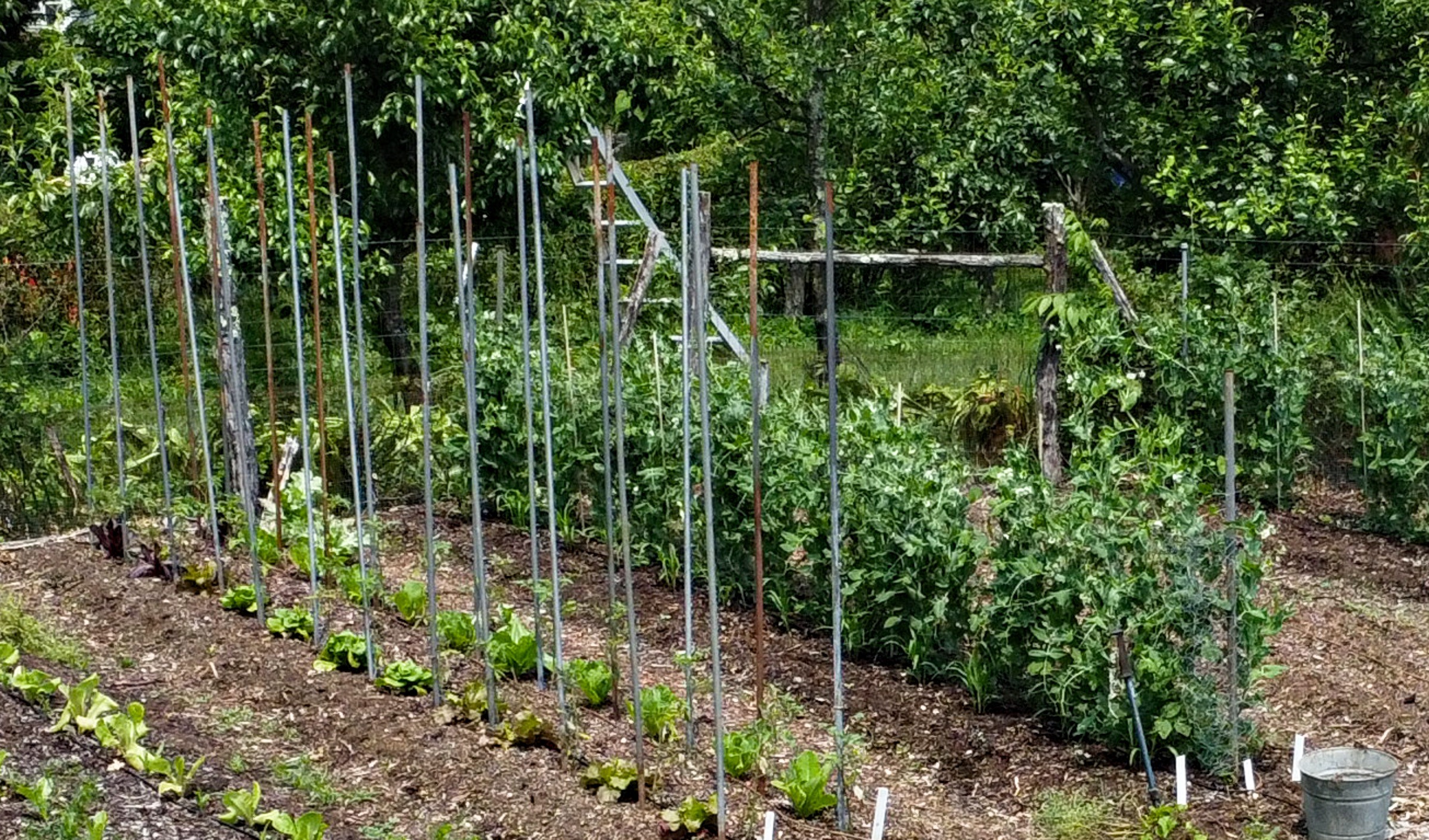
Still, my faith in seeds is occasionally shaken, even when I remind myself of the millions of years of practice seeds have had sprouting in soil. Mice sometimes shake my faith. Corn and squash seeds want to grow, but mice want to nibble away at the plump, nutritious tidbits before they sprout. After all, I also enjoy eating these seeds, the corn as popcorn or, ground, for polenta or cornbread, and the squash seeds slightly roasted. Many squash are botanically Cucurbita pepo, which also includes pumpkins; all their seeds are edible.
When the thought of mice makes my faith waver, I presprout seeds. (Or sometimes, I sprinkle a mix of powdered garlic and cayenne pepper on planted seeds before covering them with soil; or sometimes I take a two-pronged approach and do both.)
I also have been known to presprout seeds if I’m wary about whether a warmth-loving seed, such as okra, will sprout when it’s time to plant but the weather has turned unseasonably cool.
Old seed, no matter what kind, never sprouts well. Presprouting avoids wasting time and space planting lethargic or nonviable seeds. I just plant the good ones, the ones that sprouted.
More Garden in Less Space
Light isn’t needed for presprouting seeds. I only presprout a few kinds of seed and avoid doing so with fungicide treated seeds because of the extra handling presprouting requires.
Presprouting works well even with plants that do not transplant well, such as lupines or carrots. It also might be worth doing with plants not worth growing as transplants, such as peas and beans, because the yield from each plant is so paltry. But the seeds are planted only a few inches apart down a row. Enough transplants for a whole bed would require the space within a a small greenhouse; that same amount of plants, though, can be presprouted in a small jar.
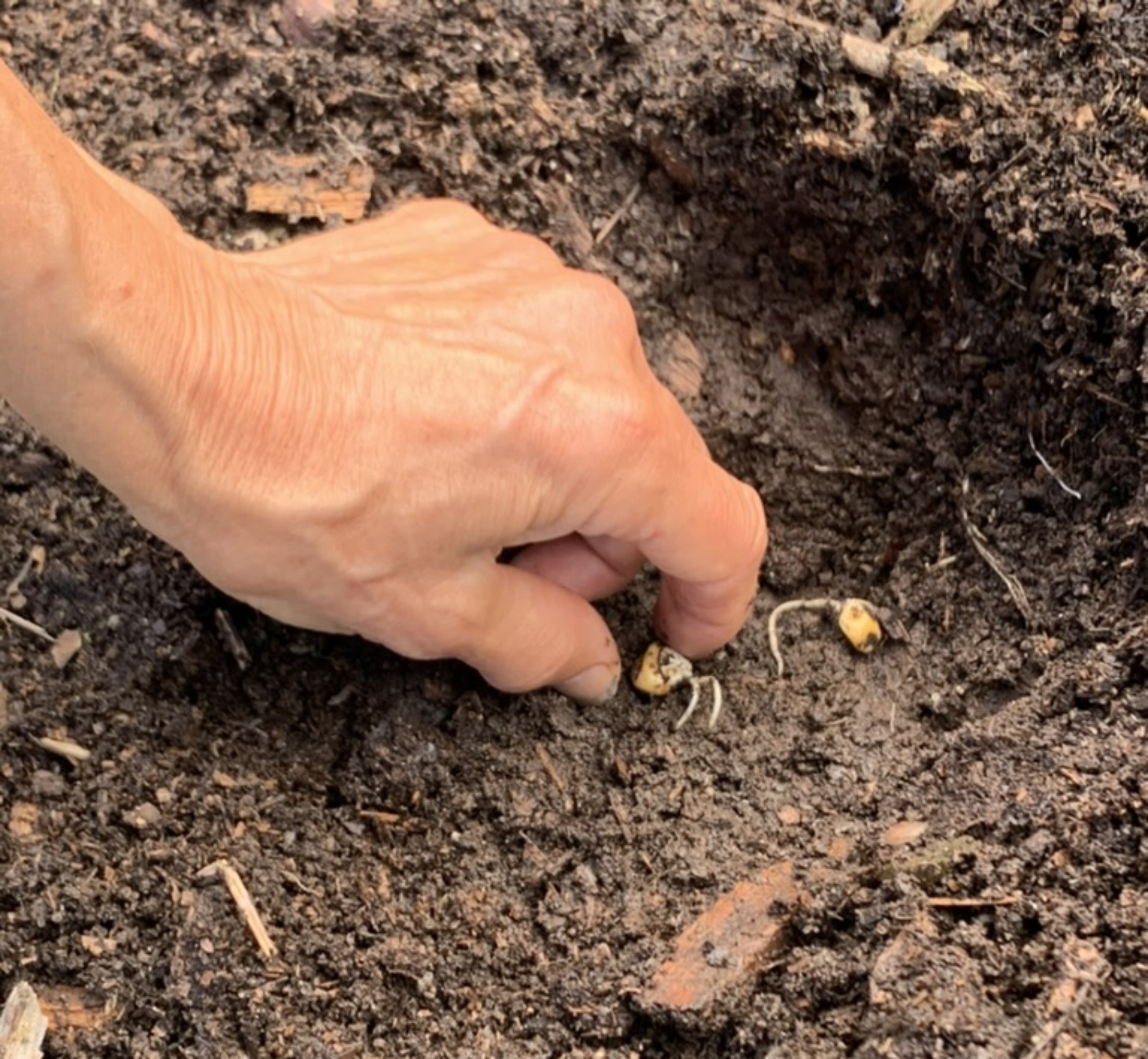
Corn, planting sprouted seed
Presprouting has the advantage of getting sluggish seeds to germinate faster than they would out in the garden. An example that comes to mind is parsley, which needs to travel down to hell and back up nine times before it finally pokes up through the ground. Or so they say. Germination is hastened as sprouting inhibitors are washed out of seeds and by the nearly ideal moisture, air, and temperature conditions seeds can be given indoors.
One more reason you might want to presprout seeds is when space is tight in the vegetable garden. Then something else can still be growing in the ground outdoors during the time that seeds are presprouting indoors.
How to Do It
Large seeds are the easiest to sprout indoors. I soak the seeds in water for a half a day or so to plump them up, then drain off the water. 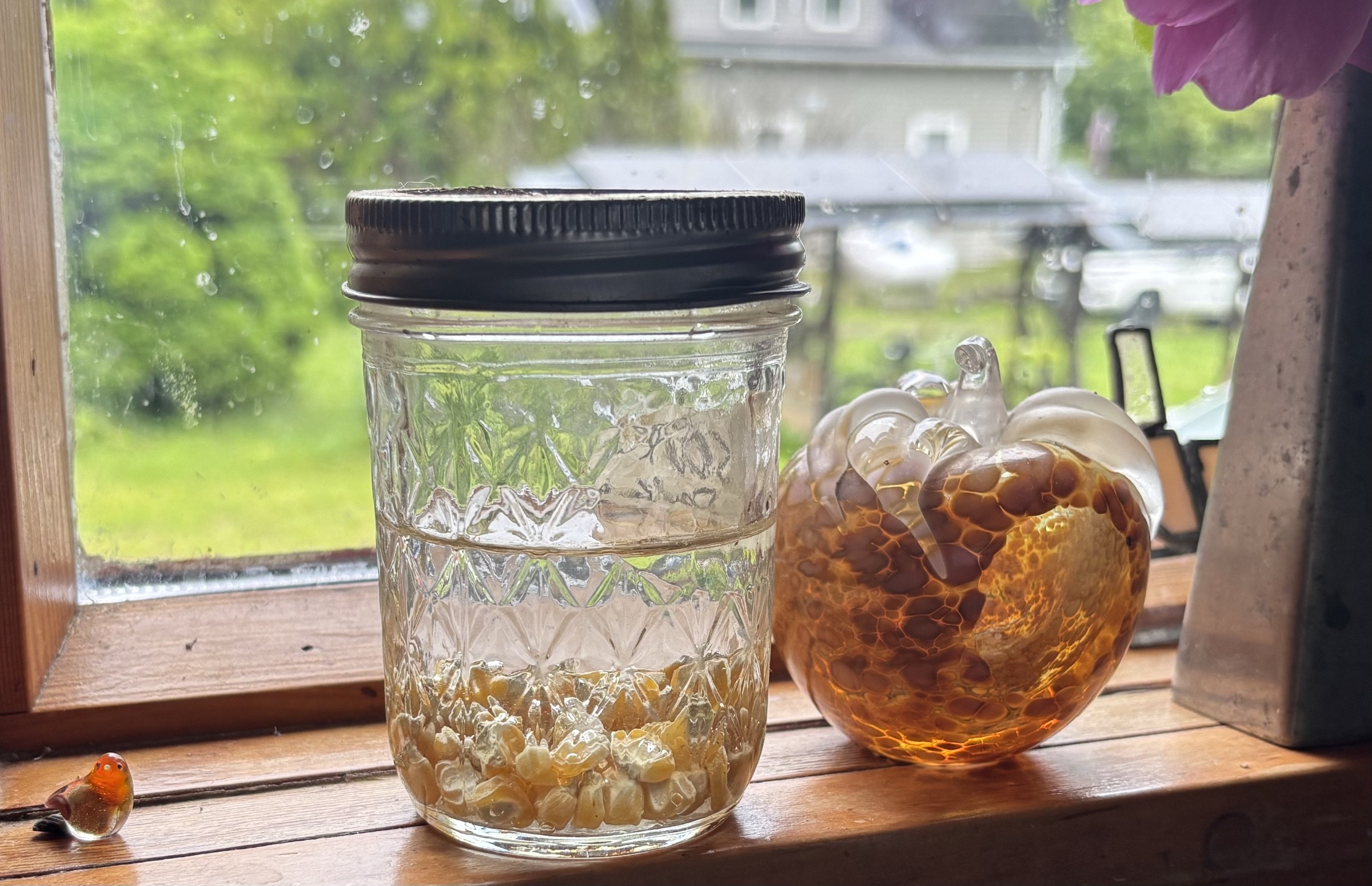 Keeping the jars by the kitchen sink is a convenient reminder to rinse them a couple of times a day, or enough so they never dry out.
Keeping the jars by the kitchen sink is a convenient reminder to rinse them a couple of times a day, or enough so they never dry out.  I use a canning jar with a screen for a lid, but any other container to which water can be added, then poured off without losing the seeds, works well.
I use a canning jar with a screen for a lid, but any other container to which water can be added, then poured off without losing the seeds, works well.
With small seeds, I spread them out after their half-day soak on a piece of paper towel, blotter paper, or filter paper laid on a dish. I then cover the seeds with another piece of moist paper and some sort of a lid to maintain humidity. Petri dishes are ideal for sprouting small seeds.
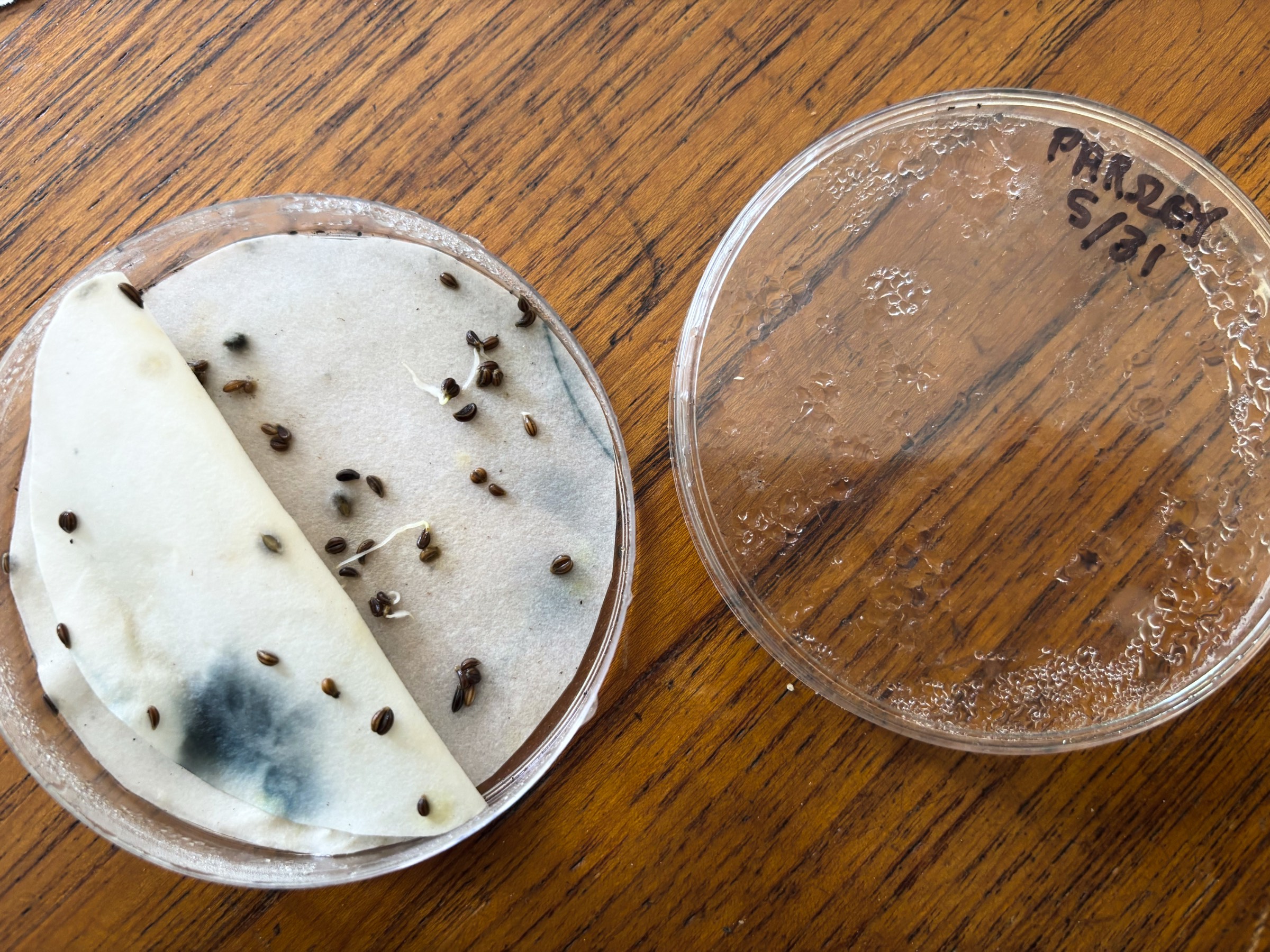
Parsley, presprouted
I keep all these seeds warm, then plant them just as soon as I see little white root radicles starting to poke through the seedcoats. I’m gentle with the seeds; those radicles are delicate.
Thoroughly mixing small seeds with some dry sand or fine potting soil makes them easier to spread along a furrow. Again, care is needed to avoid damaging the emerging roots.
I water the sprouted seeds in their holes or furrows before covering them with soil. Then I firm the soil in place and stand back!



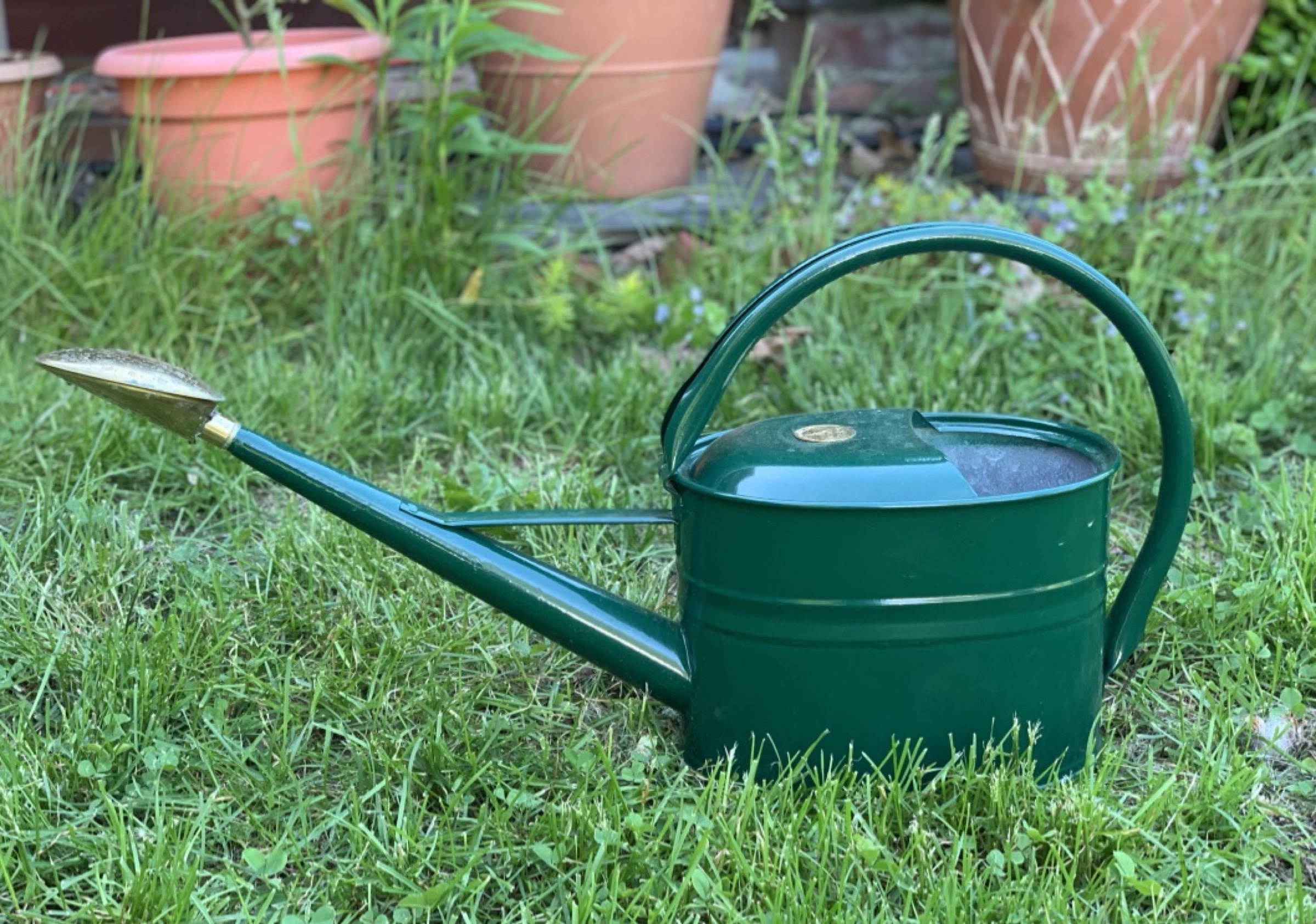
Leave a Reply
Want to join the discussion?Feel free to contribute!